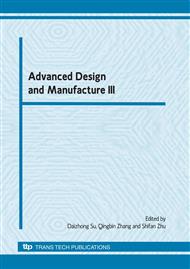p.381
p.385
p.389
p.393
p.397
p.401
p.405
p.409
p.413
Optimal Inspection Allocation for Workstations of Attribute Data with Multi-Characteristics in Multi-Station Systems
Abstract:
. The study models multi-characteristics inspection for inspection allocation problems with workstations of attribute data in serial production systems. Either 100% or 0% inspection is performed and Type I and Type II errors are considered. In addition, this study considers three possibilities of treatment of detected nonconforming units, namely, repair, rework and scrap. With the above considerations, a profit model is developed for optimally allocating inspections. Moreover, a genetic algorithm is used to solve the problem and it is proved to have much less computation time, compared with an optimization method based on complete enumeration, especially when number of workstations and characteristics becomes more.
Info:
Periodical:
Pages:
397-400
Citation:
Online since:
November 2010
Authors:
Price:
Сopyright:
© 2011 Trans Tech Publications Ltd. All Rights Reserved
Share:
Citation:


